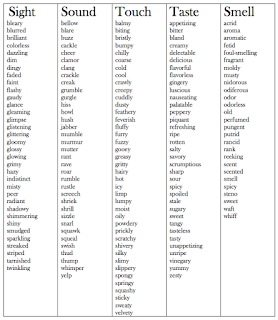At the beginning of the semester, I felt like I had some background knowledge on all genres except descriptive writing and letter writing. However, I was only thinking of the genres in terms of books that were written in these genres. While I understood how to write descriptively and had studied letter writing formats as a kid, I couldn’t think of any mentor texts that were written in these genres.
I now understand that the word “genre” refers to more than a published work. I enjoyed learning about the features of each genre, identifying those features in mentor texts, and writing my own examples of the genres. For example, I knew that nonfiction means writing that is based on facts, but I never knew the features of a nonfiction text and how to approach reading them (shout-out to my classmate Stephanie for an amazing genre presentation on this topic!). If I were sharing a nonfiction text with students in my library, I would teach them the features and show them how to approach reading this text like I learned in Stephanie’s genre presentation. The process reminded me of close reading where we went back and reviewed different parts of the text to understand it better. I think doing this would help demystify the concept of nonfiction texts, which many students may find intimidating.
Researching the benefits of letter writing for my genre presentation was eye-opening for me. I never knew that letter writing was valuable because it’s an authentic literacy activity. I read several studies that demonstrated a significant increase in students’ reading comprehension and writing skills through the process of writing and receiving letters (see annotated bibliography on my genre presentation handout for more information). Furthermore, Tompkins (2012) said that “because letters are written to communicate with a specific and important audience, children think more carefully about what they want to say, write more legibly, and are more inclined to use spelling, capitalizations, and punctuation conventions correctly” (p. 130). I am now a firm believer in the benefits of letter writing and would want to incorporate a letter program in my future school, perhaps through a pen pal program.
As future ready educators, I appreciated that part of this course was Hicks’ text on digital media. Despite having a communications/digital media background, there was still much for me to gain from Hicks. In a previous post, I wrote about my realization that anything can be a mentor text, both in print and digital formats. While I’m not intimidated by the prospect of seeking/using digital texts like audio and video in the classroom, I didn’t realize how they could be beneficial as mentor texts to demonstrate the elements of author’s craft. I would like to use them in my library to demonstrate elements of craft and the different genres.
I also really enjoyed Hicks chapter on what makes for a quality digital presentation (especially the “stickiness” factor), a skill that I believe many students lack. If students were tasked with creating digital presentations for a class, I would love to give them a crash course in how to use a platform like Google slides or PowerPoint and provide them with pointers for making a sticky presentation.
After learning about the different genres and types of digital media, I can honestly say that none of them intimidate me. I understand their features and how to evaluate them for elements of author’s craft. I may be hesitant if asked to create an audio or video text, but this course wasn’t intended to focus on how to produce audio or video text. However, Hicks provided me with many sites and free digital tools I can access going forward. I plan to keep his text and will use it in the future to access this information! I will also keep Tompkins’ book on my shelf, especially as a reference for mentor texts in the different genres. Both of the textbooks for this course will serve me well in the future.
 |
| My copies of Tompkins' and Hicks' books, with my notes on craft on the covers! |







